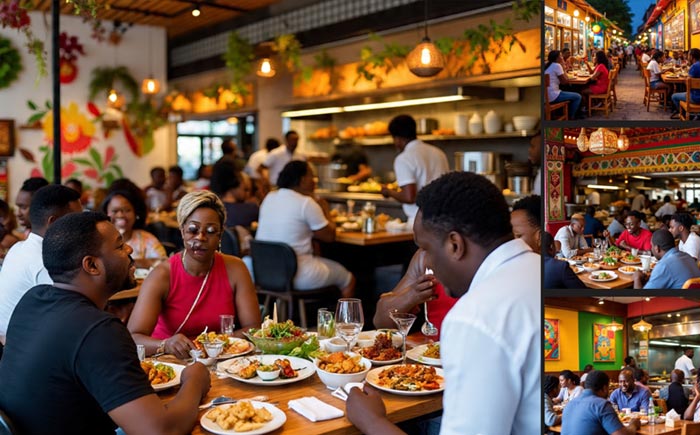
In the late 70s through the 90s, a handful of eateries defined what it meant to “eat out” in Nigeria. With their signature jollof rice, meat pies, and spicy chicken, they weren’t just restaurants — they were landmarks. Families gathered there after Sunday service, students trooped in after school, and workers queued up for quick lunches.
These pioneers introduced Nigerians to structured fast food culture: branded packaging, uniformed staff, and that thrilling idea that eating out was more than necessity — it was lifestyle. They became status symbols, a taste of urban sophistication.
The Winds of Change
As the millennium turned, so did appetites. Nigeria’s growing middle class and exposure to global culture brought new cravings: pizza, burgers, coffee dates, healthier meals. Foreign franchises rolled in, while local challengers redefined what “fast” and “fresh” could mean.
Many of the once-mighty eateries failed to adapt. Rising costs, shifting tastes, and fierce competition saw them shrink into nostalgia — fondly remembered, but rarely revisited.
Now, a new generation of dining experiences has taken centre stage. Cafés with free Wi-Fi, bistros with fusion menus, grill houses with curated cocktails, and Instagram-ready interiors dominate Nigeria’s biggest cities. Dining out is no longer just about filling the stomach — it’s about curating an experience, sharing a vibe, and of course, snapping that perfect picture.
And technology? It’s the silent chef behind the revolution. Food delivery apps and ghost kitchens mean you don’t even need a storefront to make waves. From Lagos to Abuja, a home kitchen with a smart phone can rival a brick-and-mortar eatery.
But beneath the stylish plates and modern trends lies a deeper story — a reflection of Nigeria’s evolving culture. Young Nigerians crave convenience, novelty, and digital connection. Eating out has become part of identity, lifestyle, and even social currency.
Yet, amid the glam of the new wave, traditional spots still hold their ground. Bukas, suya joints, and roadside vendors remain beloved, offering authenticity and comfort that no café aesthetic can replace. Together, they form a rich, layered foodscape — where old, new, fancy, and grassroots co-exist.
The story of Nigeria’s eateries is one of resilience, reinvention, and rhythm. The old giants may be fading, but they left behind a legacy that inspired the vibrant scene we see today. From roadside suya to high-end fusion kitchens, Nigeria continues to prove that food is never just about eating — it’s about experiencing life itself.
Lagos, Nigeria.
+234 913 161 4181
+234 803 961 8550
+234 802 321 3873
info@pepperroom.com.ng
© 2025 | 🌶️Pepper-Room - Everything Loud, Wild, and Worth Talking About. | All Rights Reserved.
Pepper-Room is not responsible for the content of external sites.